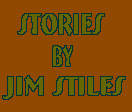
John DePuy:
Drawing in the 1950s and in the 1990s.
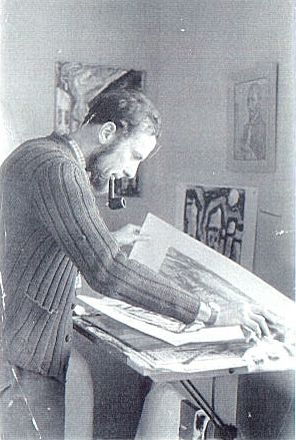
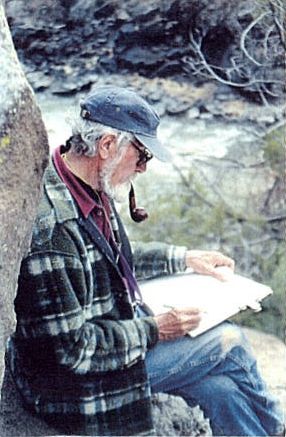
An expressionist painter with degrees from Columbia and Oxford Universities. He studied with Morris Kantor and Vaslav Vytlacyl at the Art Student League and Hans Hoffman, Hoffman School. Painted with the Cobra Group in Paris
“In my opinion he is one of the best- perhaps the very best-of the contemporary American landscape painters, a worthy heir to the tradition of Marin, Hartley and Georgia O’Keefe.”
-- Edward Abbey
“His work is unique and strongly individualistic, though, at once indigenous to this land. For he has probed, with his cutting line, beneath the deserts and the mountains, into the bare bone of the rock of this land. And has dared to seek the secrets of its womb.”
-- Stan Steiner
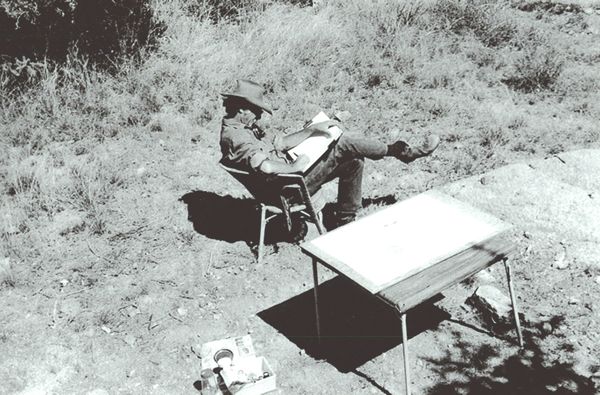
Excerpt from Taos Moderns: Art of the New by David L. Witt (Santa Fe: Red Crane Books, 1992):
John DePuy moved to Taos in 1952
He paints a hallucinated, magical, and sometimes fearsome world- not the one we think we see but the one, he claims, that is really there. A world of terror as well as beauty- the terrible beauty that lies beyond the ordinary limits of human experience, that forms the basis of experience, the ground of being.
--Edward Abbey, 1981
John DePuy has said that in Taos, with the exception of Ted Egri’s work, “The painting was not political, the lifestyles may have been, but not the painting.” Nonpoliticized art was not unique to Taos. Catalogs from the University of Illinois “Contemporary American Painting and Sculpture” series show an interest in war and political themes just after World War II, changing to less political and increasingly abstract imagery as the exhibitions continued into the 1960s. The Taos Moderns thought they had found “the ultimate philosophy of art.” How could they not have been excited about the great wave of modernist expression in which they found themselves? DePuy explained:
I think we all felt in those days that we were the primitives of a new art. And we were sadly disillusioned. I think that all abstract expressionists expected that their work would develop into a new art. There was no nihilism, no cynicism [in Taos], there was the sense of the beginning of something new. I think this is why Rothko committed suicide… Rothko, who was in many ways the master of that period, felt that his work would be the beginning… I think he felt that he was establishing a tradition that would last a hundred years, and then he realized that was impossible.
When DePuy first moved to Taos, still under the influence of his teacher, Hans Hofmann, he painted nonobjectively. Over time, Hofmann’s influence receded, but his advice to paint from remained. For DePuy, the influence on art in New Mexico was “mainly the land” and (as with Ribak) the inspiration Pueblo Indians provided in their connection with the land. In DePuy’s work, the purely surface qualities of the land are often eclipsed by the land’s sheer power. Subtle gradations of color on walls or in the sky or on limitless plains form a shifting, lively backdrop for suns which shimmer and rivers which slide away and mesas which stand darkly. DePuy wrote, “This land speaks of another time sense than our Western-European lineal time.” By this he refers to the Western concept whereby time proceeds from one definable moment directly to a later, equally definable moment. The land DePuy began painting by the mid-1950s exists within spatial time, where moments do not proceed to any destination but repeat endlessly in the regular cycle of days, years, millennia, always returning, circular rather than linear. As such, nature may contradict our expectations. In an untitled oil painting (ca. 1955), the artist presents a world which seems to have flipped upside down.
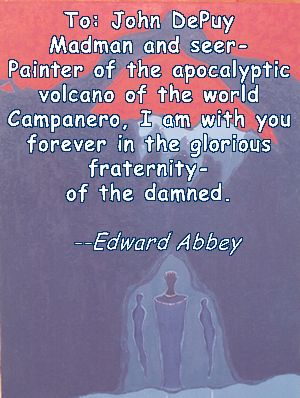


ZEPHYR HOME PAGE




